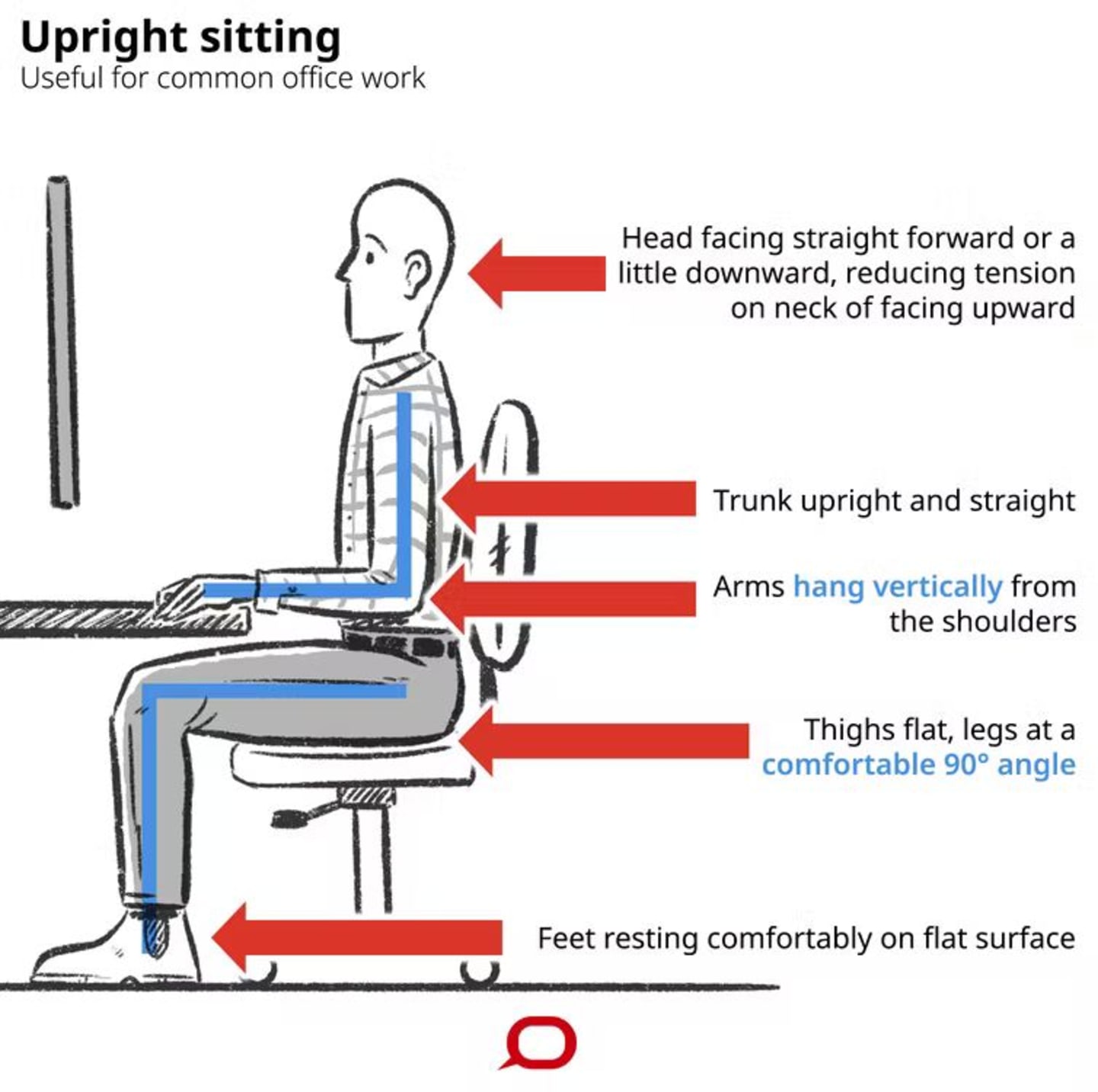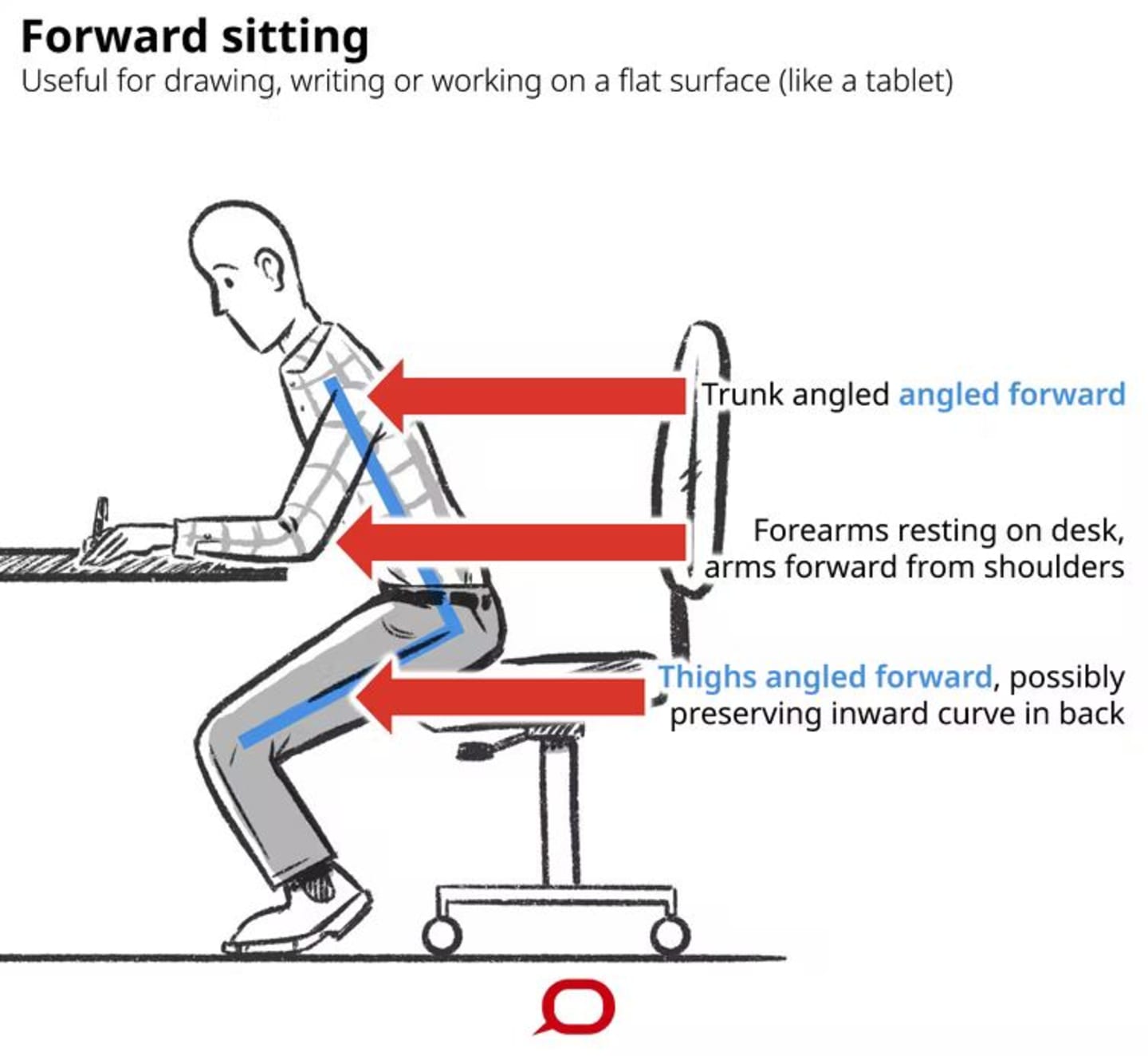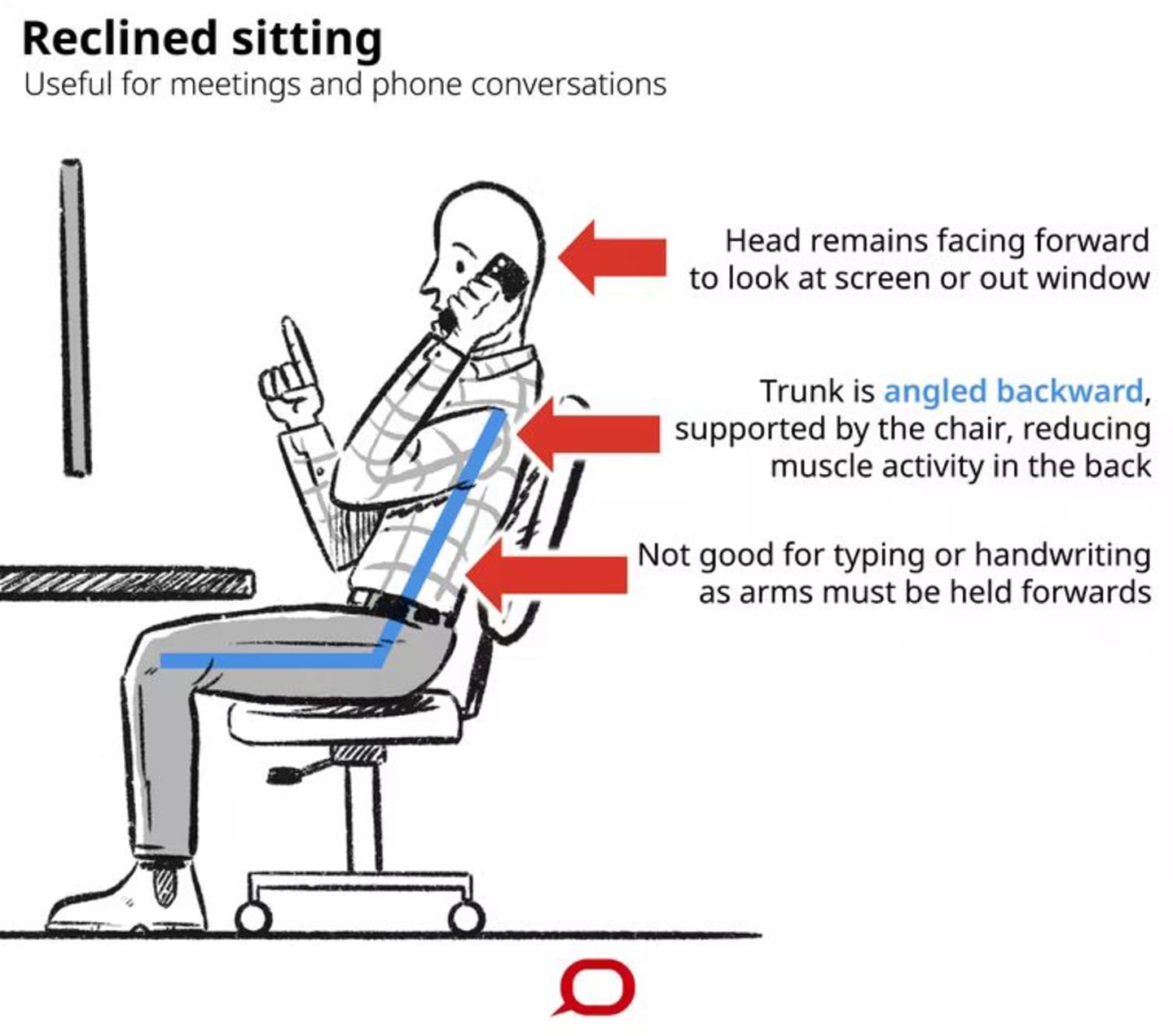Slouching doesn't necessarily lead to pain in the neck, according to new research.
It's not clear any particular posture puts people more at risk of pain, says Leon Straker, a physiotherapy professor at Melbourne's Curtin University.

Photo: Andrea Piacquadio from Pexels
Straker is part of the Raine Study which found that for young males posture isn't related to pain at all in young males. For young women, though, trying to sit upright can lead to increased tension and pain.
There is a strong public perception - including amongst health professionals - that an upright posture is correct, he says, but given these findings, it's time to rethink the idea that we should all be 'sitting up straight'.
While sitting upright may be the right thing for some people to work on, for the general population there is not a strong relationship between upright posture and less pain, Straker says.
For young women, neck pain seems to come from tense neck muscles and anxiety.
"If you really upright and having to tense your muscles a lot to try to keep that posture, that's going to fatigue your muscles and probably not work.
"If you're holding yourself upright like a tin soldier it creates too much tension in your body."
But don't slump so soon.
"A very slumped-over posture is going to put pressure and tension on your ligaments and bones… and if you hold that for a period of time that will become your habitual posture."
A neutral posture - "where you're not working too hard to hold yourself upright and not slumped over" - seems safest, he says.
And the best thing you can do for your body, whoever you are? Move it.
"Something we're realising now - maybe a bit late - is that human bodies are meant to move. So a lot of the focus now is not worrying about the detail of your particular posture, but just making sure you change to a new posture fairly regularly so your body is getting movement and a variety of stress on [its] different parts.
"Muscles respond to being used so using your muscles by moving more will keep them in better condition and if they're in better condition it's less stressful for them to try to hold your posture, as well. So I think that's a really good plan."
When in positions you'll be spending lots of time - such as while working - set yourself up for comfort, Straker says.
"Just being in a comfortable position to use your computer or watch tv actually puts you in a reasonable neutral posture and helps you to vary those postures.
"I don't really care what your posture is for short periods of time… but where you're spending lots of time each day, think about the design of that so it encourages you to have a nice comfortable posture."
Desk posture tips from Leon Straker (from What's the best way to sit?)
-
Consider how much time you spend sitting each day and if it's more than around seven hours, look for ways to reduce the total amount of time you spend sitting. For example, if you're an office worker you can stand instead of sit for some tasks (but don't stand for too long either)
-
Break up long periods of sitting with movement. Aim never to sit for longer than 30-60 minutes without allowing your body to experience alternative posture and movement, such as a short walk
-
Vary your sitting posture using the three options outlined above so your body has changes in the stresses placed on it
-
Remember there is no one good posture, but any posture held for a long period of time becomes a bad posture. Our bodies are meant to move regularly.
For sitting well at a desk, research suggests there are three main options:

Photo: The Conversation, CC BY-ND

Photo: The Conversation, CC BY-ND

Photo: The Conversation, CC BY-ND

